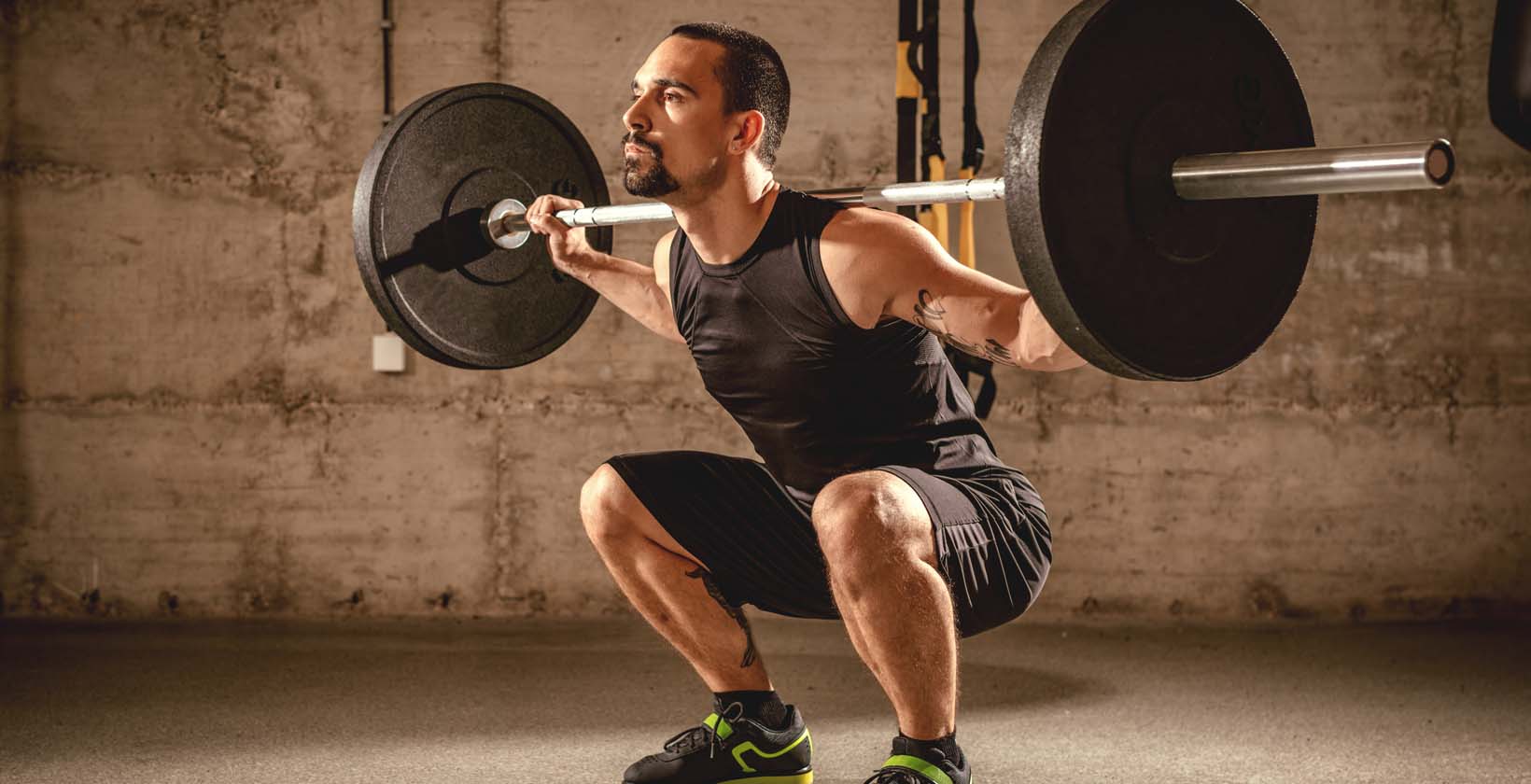The amount you should squat for your weight varies on several factors. Squats are a foundational exercise that builds a strong lower body and core. The movement pattern also replicates activities of daily living. Training squats means training your body to stand up from a chair or bend over and pick something up as you age. Watching the weights increase is an exciting experience, especially for beginners. A newfound passion often leads to the question of much should you squat and how much can you do so safely.

There are different types of squats to consider and which is best for you and your body. You must also evaluate the difference between front and back squat considerations, your biological sex, and your body weight. All factors will impact your squat exercises. Below, we’ll explore out how much you should squat, how often, and other important considerations along the way.
What are the different types of squats?
There are many different types of squats. It’s essential to understand that not all squats are the same while determining how much you should squat or how many squats you should do in a day. We’ll explore two examples of squats.
The first example is a bodyweight squat. Using only the resistance offered by your body versus gravity, a bodyweight squat means having no load-bearing. As such, you should be able to do plenty more bodyweight squats in a day than you could with a barbell on your back.
The second example is a barbell back squat. The barbell back squat used in competitive powerlifting is generally what people refer to when determining how much they should squat. The barbell front squat shifts the center of mass and incorporates different muscle groups, meaning your front squat may be significantly less than your front squat. Alternatively, if you’re a quad-dominant Olympic weightlifter, your front squat might be stronger.
Other variations impact your load-bearing capabilities as well. Safety bars, heavy goblet squats, and the Bulgarian split squat all shift your center of mass and impact different muscle groups. The key takeaway is how much you should squat doesn’t always translate from one variation to the next. Therefore, we’ll focus on the back squat and front squat.
Why is proper form important for squats?
Proper form is important for squats because it will impact the effectiveness and safety of your squats. Before you start piling plates on your barbell, examine the difference between how much you should be able to squat based on your body weight and how much you should be squatting based on your form. Proper form is everything with loaded squats. A slight shift in movement or failing to explore your entire range of motion could lead to a debilitating injury or ongoing mobility issue.
Use the squat standards as a goal to pursue safely, achieving proper form at your current weight before scaling up.
How much should I be able to squat?
Two primary factors will affect how much you should able to squat. The first factor is your biological sex and the second is your body weight. From there, the standards are divided into categories based on your experience level. They include:
- Beginner
- Novice
- Intermediate
- Advanced
- Elite
To use the squat standards, find your body weight and your one-rep max (the total weight you can squat for one rep), and see where you fall on the scale.
Back squat standards
Back squat standards vary between male and female lifters. Many strength coaches work with the goal of squatting 1.5-2 times your bodyweight— i.e., the intermediate to the advanced category for the average lifter. That means a 150lb male lifter should be able to squat 239-313 lbs for a one-rep max.
The numbers are less for female lifters. While science shows that female lifters also benefit from heavy training, females tend to have 37-68% less muscular strength than males in an apples-to-apples comparison. It’s important to note that this figure pertains to muscle fiber composition and doesn’t calculate the strength of the many powerful female lifters who excel at their craft.
While squat standards account for that variation, they don’t account for the fact that women tend to have stronger lower bodies than men, comparatively. So while a female lifter in the intermediate category would have to lift 1-1.25% of their body weight for a one-rep max— 115-168lbs at 150lbs bodyweight— the jump to advanced tends to be quicker.
You can see the full squat standards chart and calculator here.
Front squat considerations
Front squat considerations are lighter than barbell back squats due to depth and the center of gravity. With a front squat, the shift in the center of gravity typically allows lifters to go deeper than with a back squat. The deeper you go, the more power you need to get out of the hole.
Barbell squats are a compound movement that incorporates all of the major muscle groups in the body. With a back squat, you’re using your core to push your upper back against the bar and stay upright. With a front squat, you’re using your core and back to pull the bar into position so that you don’t tip forward. In a nutshell, your upper body is stronger in a back squat position.
An intermediate male lifter can typically lift 1.25x their body weight in a front squat. Similarly, an intermediate female lifter can typically front squat their bodyweight. This standard assumes that the lifter is specifically training for the nuances of a front squat.
You can see the front squat standards here.
How often should I squat?

Your goals, training style, and the types of squats you’re doing will affect how often you should squat. For example, if you’re training for a powerlifting competition, you might do heavy barbell squats twice per week— once with lower weights and higher reps and once with low reps and high weights. Bodybuilders looking to build mass might squat low weight and high reps multiple times a week. Either group could incorporate free weight and cable machine squat variations for good measure.
If your goal is to get stronger, track your weekly squat volume and ensure you’re incorporating progressive overload by steadily increasing your reps or weight. Incorporating a deload week every few weeks will give your body the break it needs to recover.
If you are struggling to recover or hit your weights, you’re probably squatting too much. Don’t let your ego take over the driver’s seat; slow down and work on form and recovery.
Conclusion
Consider all the variables when trying to figure out how much you should squat for your weight. Your training style, mobility, and form will all impact your success. Squats are strenuous on the body and will cause strain or injury if improperly done. Evaluate the back and front squats consideration we’ve detailed above before coming to a decision. Find your ideal weight for squats, set a goal, and create a sustainable program to achieve it.